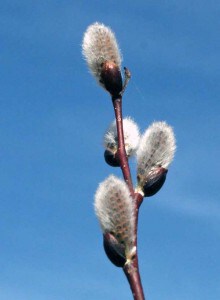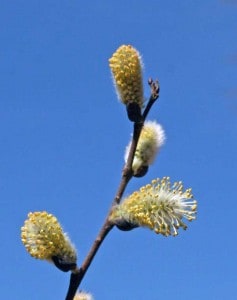
(Chelsea Update would like to thank Tom Hodgson and the Waterloo Natural History Association for the information and photos in this column.)
Many of us have cut “pussy willows” from marshes and wetlands and placed them in vases as the first flowers of spring. There is a particular willow Salix discolor, that is officially known as the “pussy willow,” but nearly all willows have fuzzy spring flower buds that may remind us of furry kittens.
The coverings on willow buds serve a real purpose. They hold in the heat gained during the day so that the delicate, developing flower parts inside can withstand cold spring nights. This enables the flowers to develop very early before there is much competition for the attention of pollinating insects. Willow flowers (called catkins) produce large amounts of nectar, so that the hungry insect pollinators are generously rewarded for their efforts.
Willows keep the sexes separate, each having either male or female flowers, but not both on the same

plant. The male flowers open slightly before the females insuring that plenty of mature pollen is available to fertilize the female flowers. The leaf buds that open later in the spring do not have furry coverings.

Willows have long been used for landscaping, especially the pussy willow and weeping willow. The bark of willow has also been recognized for its pain-relieving properties. The active ingredient is salicin. Experts believe that when the body processes salicin, it turns it into salicylic acid, which is the chemical precursor to aspirin. European chemists figured out how to extract salicin and turn it into salicylic acid. It became popular as a pain reliever and fever reducer, and was then modified to become acetylsalicylic acid, or aspirin.
Willow wood is quite soft and is great for making whistles, some furniture, woven baskets, and for carving. Willows, including the true pussy willow are easily propagated from cuttings.













